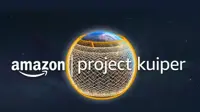Scientists report fourth gravitational wave detection
28 Sep 2017
Scientists have detected another burst of gravitational waves produced with the merger of two black holes.
The collision occurred nearly 2 billion years ago, but it was so distant that the shockwave from the collision has only just reached us.
This is the fourth confirmed detection by an international team which is investigating Einstein's Theory of General Relativity.
According to Sheila Rowan of Glasgow University, UK, the team is now on the threshold of a new understanding of black holes.
"It is tantalising to see this new story of how black holes formed and evolved through history of the cosmos," she told BBC News.
"This information is almost within our grasp but we are not quite there yet."
Gravitational waves are produced by cataclysmic events such as the collision of two black holes or the explosion of a giant star.
They can be thought of as ripples in time-space much like those caused by a pebble dropped in a pond. Like the rippling of water, all matter undergoes momentary distortion as the gravitational wave passes through. But the distortions are minute, and the earth is stretched and squeezed by less than the width of an atom.
Gravitational detectors in the US and more recently in Italy were able to detect this tiny warping effect, predicted by Albert Einstein 102 years ago.
With the latest detection scientists have for the first time been able to trace the shape of ripples sent through spacetime when black holes collide.
The announcement, was made at a meeting of the G7 science ministers in Turin. The gravitational wave was detected at Ligo, the Laser Interferometer Gravitational-Wave Observatory.
The latest detection is also the first to be picked up by the Virgo detector, located near Pisa, Italy, providing a new layer of detail on the three dimensional pattern of warping that occurs during some of the most violent and energetic events in the universe.









.webp)














